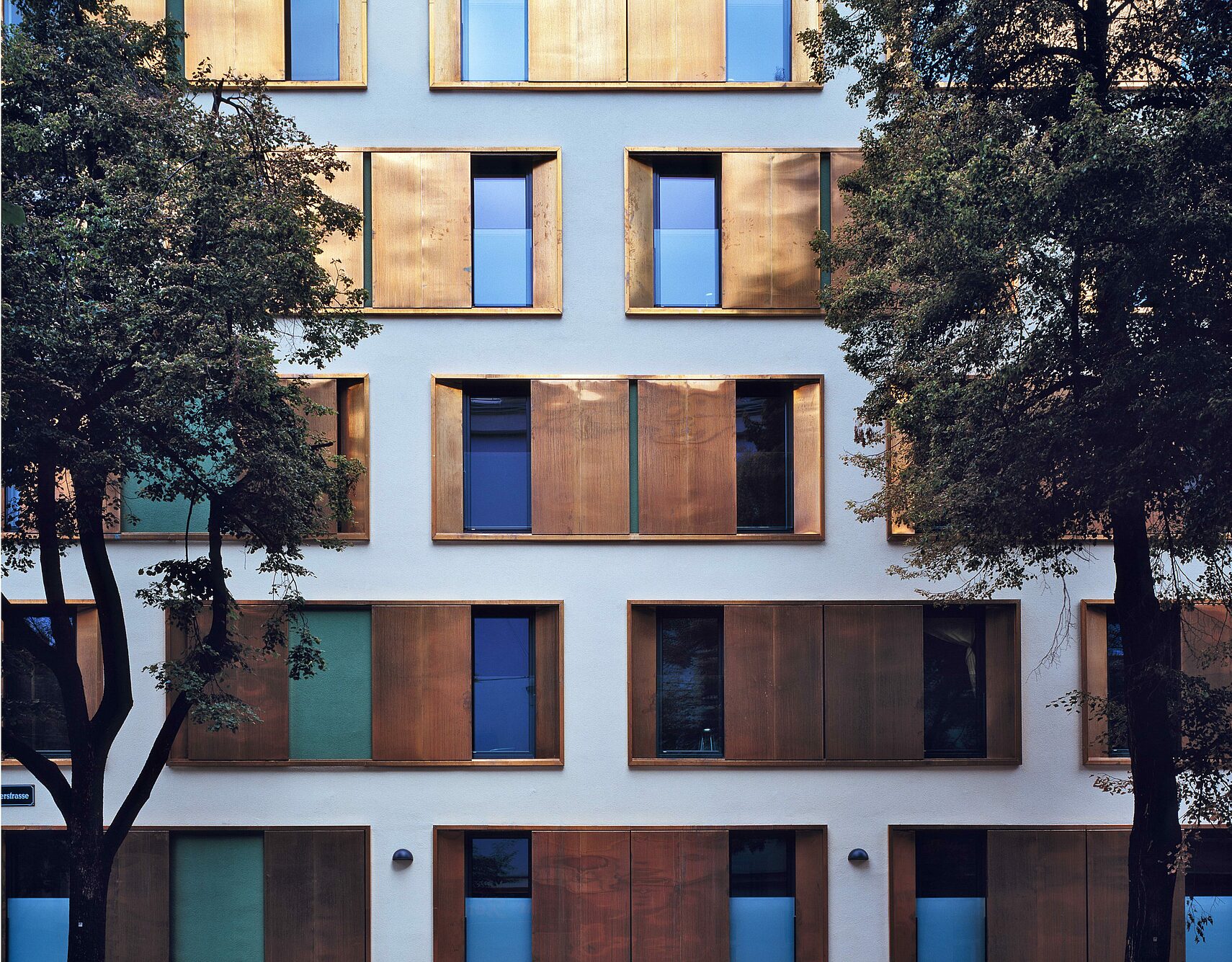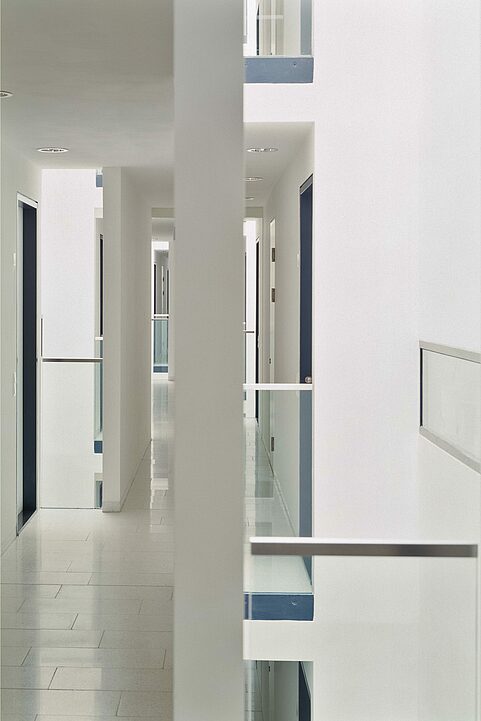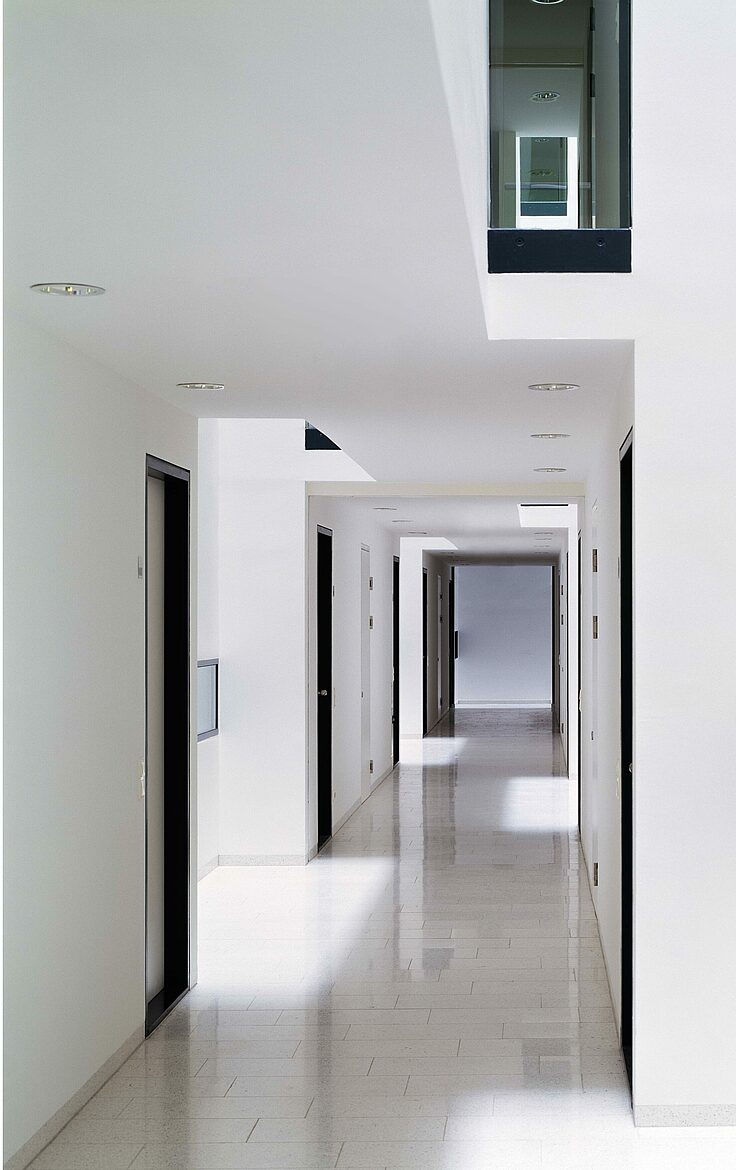More content
Residential

Otto Kapfinger
"Trotz der enormen Dichte wurde dem Trakt mit professioneller Gewitztheit in einer Vielzahl minimierter Eingriffe auch beachtliche architektonische Qualität abgerungen." (Nominierung Staatspreis 2006 für Architektur und Nachhaltigkeit)
A large-scale project built to passive building standards. The brief here on the site of the old Vienna dairy was to erect a new student residence for the Universities of Vienna that would be a model of sustainability thanks to its sparing use of resources. The building was also to make an architectural statement in a up-and-coming district of Vienna characterised by late 19C buildings.
Its location in an area of historical interest required careful treatment in terms of its integration into the surrounding built environment, lighting and the use of solar energy. The result more than met the requirements of the Passivhaus energy standard. The compact structure with its meandering façade of plastered sections, sliding shutters and glazed panels forms an elegant boundary to the district.
Natural lighting in central corridor
The lavish design continues inside, where light wells cut through the building from roof to base in a departure from the traditional structure of multi-occupancy residences. As a result, rather than the usual dark corridors, the units open off a row of friendly access zones, full of natural light, alternately projecting and set back in a pleasing rhythm.


The building provides modular residential units for 278 students ranging from studios to four-roomed flats. White walls and ceilings and robust parquet flooring in the individual units create a friendly atmosphere. Despite the high density and strict building plant and services standards, the impression created is one of openness and space increasing floor by floor. The rooms on the top floor look out over trees and the rooftops of Vienna to the Prater park.
Low energy consumption, lively façade
The Passivhaus design minimises energy costs without skimping on comfort and the students control the heating and ventilation systems independently. Thanks to smart building technology and a ventilation system which ensures constant, temperature-controlled air exchange, the individual units need only be heated for around 500 hours a year. The simple, meandering façade, the sculptural design of the window returns and the “random images” created when the sliding copper shutters are moved give the building a light, buoyant feel.